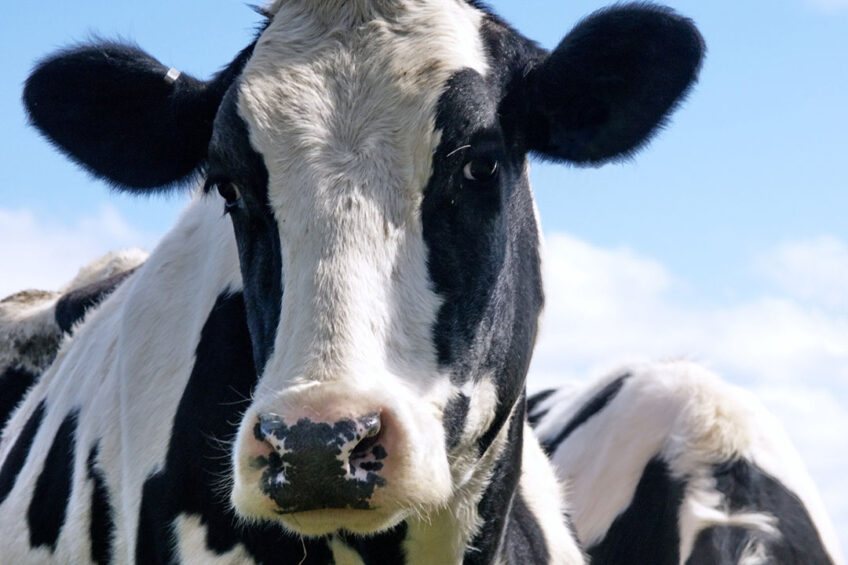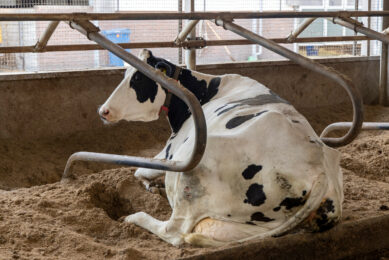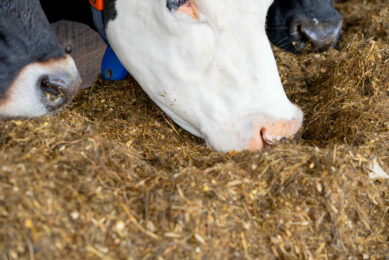Tackling mastitis the right way

Mastitis is considered to be one of the most costly dairy cattle diseases, making it highly relevant to dairy farmers. The economic impact of poor udder health cannot be underestimated.
Mastitis is also one of the most common reasons for cows to be removed from the herd. To put this into context, an increase of 100,000 in the milk tank somatic cell count (SCC) equates to a loss of nearly one litre of milk per cow per day. The financial loss per case of mastitis can be up to € 150, with milk loss and replacement making up the majority of the cost (Schroeder, 1997).

Often, mastitis-associated losses are underestimated due to their non-definitive – and often non-clinical – symptoms, such as reduced milk production. Multiple factors contribute to mastitis and elevated SCC, ranging from environmental issues to the milking procedure to poor immune system function. Unfortunately, there is no magical solution that will prevent mastitis problems on-farm.
Causes of mastitis
Causes of mastitis vary from infection to physical trauma. The leading cause of mastitis is bacteria. Yeasts and moulds are sometimes implicated but account for only about 1% of cases. Infectious organisms invade the udder via the teat canal, migrating up through it and colonising the secretory cells. These organisms can produce toxins that damage the milk-producing tissues, which reduces their ability to produce milk. The extent of colonisation depends largely on the cow’s own immune system. The animal’s white blood cells infiltrate the mammary gland and engulf the bacteria, which causes a rise in the SCC. The bacteria can originate from already-infected udders, the environment (including bedding, water and manure) and replacement animals coming onto the farm. Streptococcus spp., Staphylococcus spp. and coliforms are the main culprits for mastitis, resulting in both subclinical and clinical mastitis. For example, Staph. aureus is responsible for so-called “summer mastitis”. Mastitis passed from one cow to another is often termed as contiguous mastitis. Subclinical mastitis usually results from infection from the environment. Interestingly, the primary time for animals to become infected is during the dry period, making adequate dry cow management essential for minimising risk.

The aim of good management is to improve the cow’s own resistance to infection. The first defence is the skin of the udder. Promoting udder and teat integrity by ensuring good hygiene during and after milking (e.g. teat dip or spray), correct functioning of the milking machine (e.g. not leaving the clusters on for longer than necessary) and cleaning udders goes a long way towards reducing the risk of infection. Hygiene and udder scoring are good, practical ways to assess cleanliness, as animals with poor scores can be 1.5 times more likely to have major pathogens isolated from milk samples compared with cleaner animals (Schreiner et al., 2003). Vaccinations are available against certain bacteria (e.g. coliforms). However, the cow’s own immune system is the best vaccination, and proper nutritional management can enhance the response to infection. An optimal supply of minerals and vitamins, as well as taking steps to minimise negative energy balance post-calving, are essential. Producers are encouraged to have a mastitis control plan that includes key areas of management that will be implemented to reduce the risk of mastitis.
- Individual cow milk recording: This is the most crucial part of any mastitis programme. Individual cow milk recording enables you to monitor the SCC of each cow over the course of the lactation. This information then allows you to identify cows with higher than average SCC and whether they are repeat offenders. It also aids in identifying animals likely to respond to dry cow therapy and those that should be culled.
- Early detection: Once high SCC cows have been identified, it is crucial to find out which quarters are causing the problem. Fore-milking or pre-stripping while wearing disposable gloves, manual inspection of the udder and California Mastitis Tests (CMT) should be used to identify clinically infected quarters. Symptoms of infection include clots, colour changes in the milk and swelling of the affected quarter. Early treatment of these cases with suitable courses of intramammary antibiotics will minimise the establishment of chronic infections and reduce the spread of contagious bacteria during the milking process.
- Targeted milk sampling of high SCC cows: Having located the infected quarter, treating the infection with an appropriate antibiotic will achieve the best cure rates. Taking a sterile milk sample from the infected quarter and sending it for analysis will allow you to determine which bacteria is/are causing the infection. This analysis will then direct you towards a more targeted antimicrobial treatment. It is imperative to know the source of the infection and how it spread. If the bacteria identified are contagious, it will mean there are chronically infected cows in the herd, and milking management should be reviewed. If the bacteria are environmental, then the source of infection is likely to be dirty or contaminated calving areas, cubicles or walkways. Environmental bacteria will spread between milkings, and control should be aimed at decreasing the environmental risks.
- Optimal post-milking teat disinfection: While the entire milking routine is important, optimal post-milking teat disinfection is the most critical aspect in terms of controlling the spread of contagious mastitis bacteria. It is crucial to ensure that there is a sufficient volume and coverage of disinfectant applied to each teat when being used.
- Udder hygiene evaluation score: Assess and monitor the cleanliness of the cows’ udders by scoring from 1 to 4, where 1 is very dirty and 4 is very clean. There is a direct correlation between udder hygiene score and the prevalence of pathogens.
- Feeding programme and mineral supplementation: The challenge to a cow’s immune system at calving results in a decreased ability to fight infections, including those affecting the udder. Nutritional considerations should include the structure and composition of the ration, particularly fibre digestibility and particle size. High starch intakes, infrequent feed access and poorly mixed total mixed ration can all compromise rumen health. Optimal supply of minerals and vitamins, as well as taking steps to minimise negative energy balance post-calving, are essential. Selenium is the best-studied mineral with regards to mastitis. It is involved in both the antioxidant and immune systems, and Se-deficient animals have been shown to have lowered immunity and resistance to disease. On a practical level, there is a negative relationship between bulk tank SCC and Se status, that is, the better the Se status, the lower the SCC (Figure 1).

Zinc is a crucial component of proteins involved in nearly all metabolic processes, as well as in DNA production. Deficiency can lead to thickened, hardened and cracked skin, especially on the teat end, which can compromise the integrity of the first barrier to infection. In addition, levels of Zn in the blood are known to drop sharply around calving, potentially leaving animals more susceptible to infection. Copper is also involved in the immune system and related enzymes, and Cu supplementation has shown benefits to udder health. Scaletti et al. (2003) noted that dairy cows supplemented with Cu exhibited a less severe infection following an Escherichia coli challenge compared with unsupplemented animals. Use of more bioavailable, organic trace minerals, such as Bioplex and Sel-Plex, can play a key role in cow health, as can support to maintain a healthy immune system.
Mastitis has the potential to significantly reduce the performance, profit and welfare of any dairy operation. Thus, producers should be vigilant in their control plan to try to minimise its impact.
Join 13,000+ subscribers
Subscribe to our newsletter to stay updated about all the need-to-know content in the dairy sector, two times a week.










